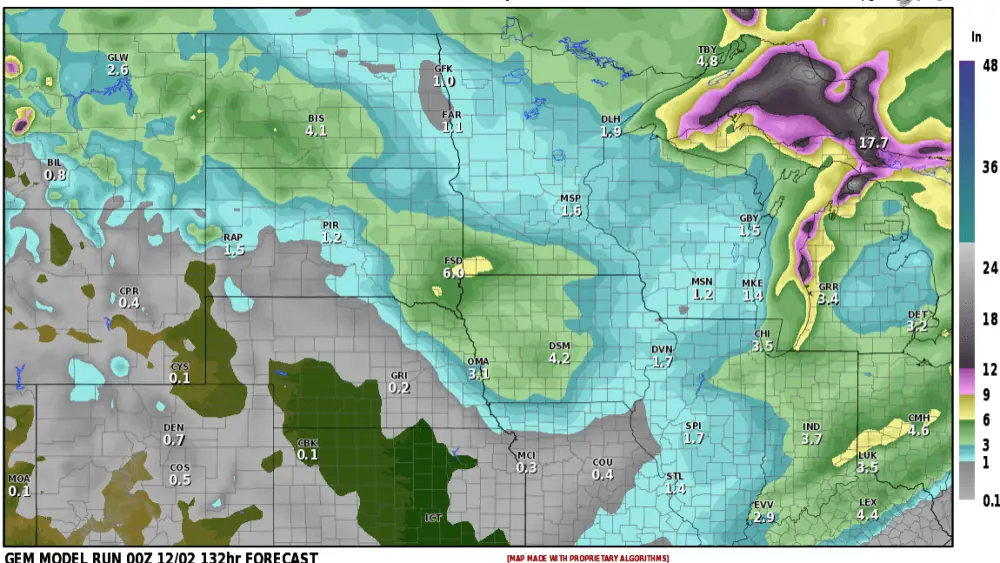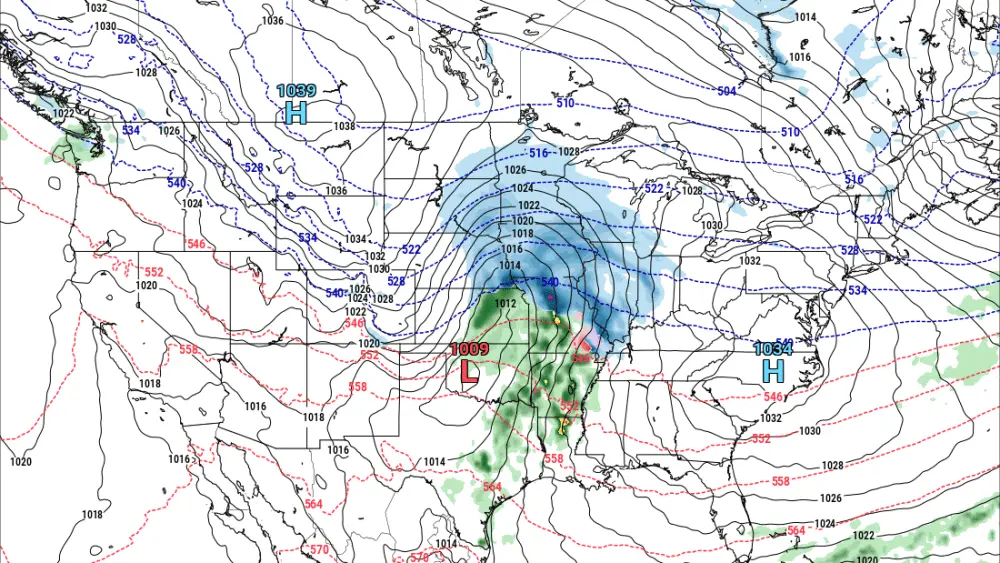Weather is something that affects everyone but sometimes there is confusion about the terminology used to explain the impacts and possibilities of the weather. What is the difference between a watch and a warning? What differentiates a regular storm from a severe storm? What should I do if I’m in a warned area? I hope to shed some light on these questions as a part of North Dakota Severe Weather Awareness Week.
First, what categorizes a severe thunderstorm?
We see our fair share of storms throughout the spring and summer and occasional fall time thunderstorms but far fewer storms are categorized as severe. Why is this? The definition for a severe thunderstorm is that of a storm that produces wind gusts of 58 mph or greater, and or producing hail at the size of one inch or quarter-sized hail or greater. It only takes one of the following two to trigger a warning to be issued by either the National Weather Service of Grand Forks or Bismark ND. In addition to damaging winds and large hail, severe thunderstorms are also capable of producing tornadoes, flash flooding, and deadly lightning. In the case of a severe thunderstorm producing a tornado or being able to produce a tornado, a Tornado Warning would be issued instead of a Severe Thunderstorm Warning with messaging of the other weather impacts in regards to wind, hail, and the threat of damage. See the example below.


“On average, only 10 percent of all severe thunderstorms reach the destructive category each year, nationwide… Storms categorized as destructive will trigger a WEA to your cell phone. Learn how to stay safe in a severe thunderstorm. Knowing what to do before, during, and after severe weather can increase your chances of survival.” -National Weather Service
What is the difference between a Watch and a Warning?
Oftentimes a Severe Thunderstorm or Tornado Watches will be issued in an area but watch does a watch mean? Simply put a Severe Thunderstorm Watch means Be Prepared! Severe thunderstorms are possible in and near the watch area. Stay informed and be ready to act if a severe thunderstorm warning is issued. The watch area is typically large, covering numerous counties or even states. Are all storms that develop in a watch area severe? No not all storms that develop in a watch are become warned or severe, but it’s more probable for storms within that area to become warned as conditions over that area a supportive of storms that produce severe weather.
A Severe Thunderstorm Warning: Take Action! Severe weather has been reported by spotters or indicated by radar. Warnings indicate imminent danger to life and property. Take shelter in a substantial building. Get out of mobile homes that can blow over in high winds. Warnings typically encompass a much smaller area (around the size of a city or small county) that may be impacted by a large hail or damaging wind identified by an NWS forecaster on radar or by a trained spotter/law enforcement who is watching the storm.
This can go for Severe thunderstorms or tornadoes.
Tornado Watch: Be Prepared! Tornadoes are possible in and near the watch area. Review and discuss your emergency plans and check supplies and your safe room. Be ready to act quickly if a warning is issued or you suspect a tornado is approaching. Acting early helps to save lives! Watches are issued by the Storm Prediction Center for counties where tornadoes may occur. The watch area is typically large, covering numerous counties or even states.
Tornado Warning: Take Action! A tornado has been sighted or indicated by weather radar. There is imminent danger to life and property. Move to an interior room on the lowest floor of a sturdy building. Avoid windows. If in a mobile home, a vehicle, or outdoors, move to the closest substantial shelter and protect yourself from flying debris. Warnings are issued by your local forecast office. Warnings typically encompass a much smaller area (around the size of a city or small county) that may be impacted by a tornado identified by a forecaster on radar or by a trained spotter/law enforcement who is watching the storm.
Severe Thunderstorms are typically referenced with yellow boxes/polygons while tornadoes are referenced with red boxes/polygons.
See the example below for a watch message.

Here is my favorite image to differentiate between a watch and a warning.

Other Warnings you may see
A Flood Watch is issued when conditions are favorable for flooding. It does not mean flooding will occur, but it is possible. If specifically, Flash Flooding is possible, the Flood Watch will contain:
* WHAT…Flash flooding caused by excessive rainfall is possible.
Flash Flood Warning
A Flash Flood Warning is issued when flash flooding is imminent or occurring.
Flood Warning
A Flood Warning is issued when flooding is imminent or occurring.
Meteorologist,
Justin Storm




